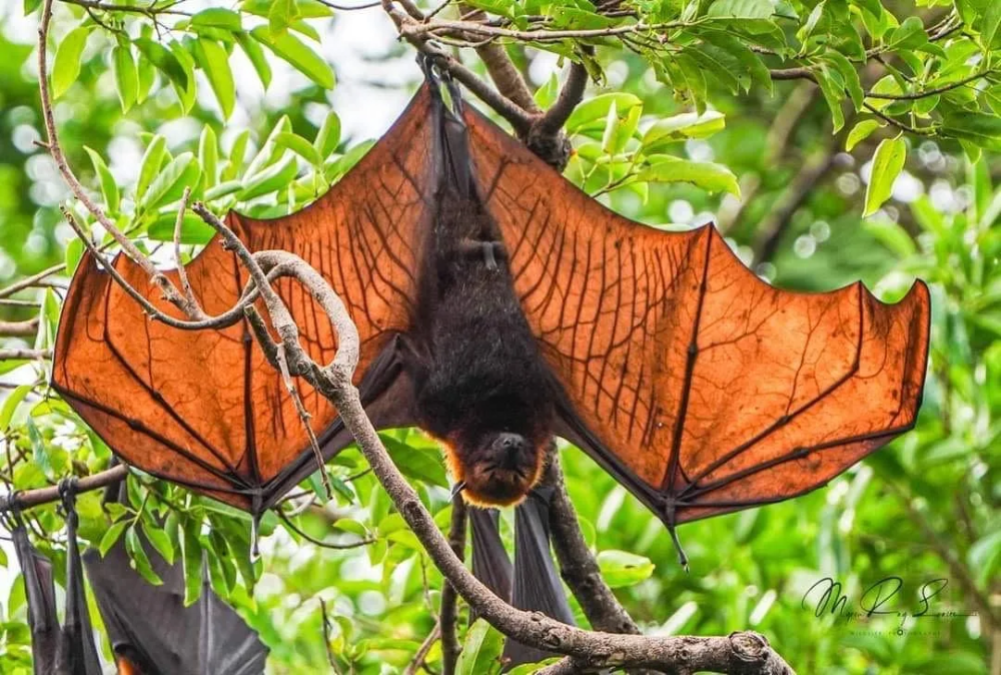In the realm of nocturnal wonders and mysterious creatures that adorn the night skies, the Golden-Crowned Flying Fox stands as a majestic sentinel of the tropics. With its striking appearance and intriguing ecological role, this megabat captivates the imagination of both scientists and nature enthusiasts alike. From its unique physical features to its vital ecological contributions, let’s delve into the world of the Golden-Crowned Flying Fox and unravel the mysteries that surround this remarkable creature.
Understanding the Golden-Crowned Flying Fox
The Golden-Crowned Flying Fox (Acerodon jubatus) is a species of megabat belonging to the family Pteropodidae, endemic to the lush rainforests of the Philippines. Renowned for its impressive wingspan, which can reach up to an astonishing six feet, this species holds the distinction of being one of the largest bats in the world. Its name is derived from the golden fur that adorns its regal crown, adding to its allure and mystique.
Physical Characteristics
One cannot help but be captivated by the striking appearance of the Golden-Crowned Flying Fox. Its fur, ranging from shades of golden-brown to a deep russet hue, shimmers in the moonlight as it takes to the skies in search of sustenance. Its broad wings, reminiscent of a darkened canopy, enable it to gracefully navigate through the dense foliage of its forest habitat. With large, expressive eyes and a distinctive facial structure, this megabat possesses an air of intelligence and grace.

Ecological Role
Beyond its aesthetic appeal, the Golden-Crowned Flying Fox plays a crucial role in maintaining the delicate balance of its ecosystem. As a primary pollinator and seed disperser, it serves as a keystone species, facilitating the regeneration of the forest habitat upon which countless other species depend. By consuming fruits and nectar from a diverse array of plant species, it inadvertently aids in the propagation of these plants, thereby contributing to the overall biodiversity of the region.
Conservation Status
Despite its ecological significance, the Golden-Crowned Flying Fox faces numerous threats to its survival. Habitat loss due to deforestation, coupled with indiscriminate hunting and persecution, has resulted in significant population declines in recent decades. Furthermore, the species is particularly vulnerable to disturbances such as typhoons and disease outbreaks, further exacerbating its precarious status.
Conservation efforts aimed at protecting the Flying Fox and its habitat are thus paramount. Local and international organizations are working tirelessly to implement measures such as habitat restoration, community education, and the establishment of protected areas to safeguard this species and ensure its long-term viability.
Cultural Significance
In addition to its ecological importance, the Flying Fox holds a special place in the cultural heritage of the Philippines. Revered as a symbol of fertility and abundance in indigenous folklore, it is often depicted in traditional art and mythology. However, changing attitudes and increasing urbanization have led to conflicts between humans and bats, highlighting the need for greater awareness and conservation efforts to preserve this cultural icon for future generations.
Conclusion
In the tapestry of life that adorns our planet, the Golden-Crowned Flying Fox emerges as a shining thread, weaving its way through the intricate web of ecosystems upon which all life depends. From its ethereal beauty to its indispensable ecological role, this majestic megabat reminds us of the interconnectedness of all living things and the importance of preserving the natural world for generations to come. As we strive to protect and conserve this enigmatic creature, we not only safeguard its future but also ensure the continued health and vitality of our planet’s rich biodiversity.









